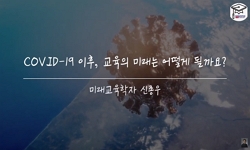Objective This study aimed to investigate characteristics of suicide attempters who visited the emergency department to identify physical risk factors and rescue factors, and to assess the impact of social distancing during coronavirus disease-2019 (C...
http://chineseinput.net/에서 pinyin(병음)방식으로 중국어를 변환할 수 있습니다.
변환된 중국어를 복사하여 사용하시면 됩니다.
- 中文 을 입력하시려면 zhongwen을 입력하시고 space를누르시면됩니다.
- 北京 을 입력하시려면 beijing을 입력하시고 space를 누르시면 됩니다.




Analyzing the Impact of Social Distancing Policies During COVID-19 on the Risk and Rescue of Suicide Attempters Presenting to the Emergency Department: Applying the Risk-Rescue Rating Scale
한글로보기https://www.riss.kr/link?id=A109566757
- 저자
- 발행기관
- 학술지명
- 권호사항
-
발행연도
2025
-
작성언어
-
- 주제어
-
KDC
510
-
등재정보
SCIE,SSCI,SCOPUS,KCI등재
-
자료형태
학술저널
-
수록면
175-185(11쪽)
- DOI식별코드
- 제공처
-
0
상세조회 -
0
다운로드
부가정보
다국어 초록 (Multilingual Abstract)
Methods The study utilized data from the medical records of suicide attempters who visited the Bucheon Regional Emergency Medical Center of Soonchunhyang University Bucheon Hospital for 3 years from 2019 and the consultation records of the Life Love Crisis Response Team. This cross-sectional study analyzed changes in risk and rescue characteristics of suicide attempters before, during, and after the implementation of social distancing policies. The Risk-Rescue Rating Scale (RRRS) was used to assess the risk and rescue of suicide attempters.
Results During the implementation of social distancing, the RRRS for physical risk demonstrated a 1.67-fold increase in low-risk cases, which further escalated to a 2.39-fold increase post-implementation compared to the period prior to social distancing. Additionally, the RRRS indicated that behaviors became 1.44 times less rescued amid social distancing, with increased tendencies to conceal the act to evade detection and a reluctance to seek help (p<0.001).
Conclusion Our findings indicate that it is important to develop suicide prevention programs for low-risk suicide attempts and to identify the characteristics of suicide attempts that occur during large-scale social isolation, such as infectious diseases, in order to develop strategies for suicide prevention in the future.
Objective This study aimed to investigate characteristics of suicide attempters who visited the emergency department to identify physical risk factors and rescue factors, and to assess the impact of social distancing during coronavirus disease-2019 (COVID-19) on suicide attempters.
Methods The study utilized data from the medical records of suicide attempters who visited the Bucheon Regional Emergency Medical Center of Soonchunhyang University Bucheon Hospital for 3 years from 2019 and the consultation records of the Life Love Crisis Response Team. This cross-sectional study analyzed changes in risk and rescue characteristics of suicide attempters before, during, and after the implementation of social distancing policies. The Risk-Rescue Rating Scale (RRRS) was used to assess the risk and rescue of suicide attempters.
Results During the implementation of social distancing, the RRRS for physical risk demonstrated a 1.67-fold increase in low-risk cases, which further escalated to a 2.39-fold increase post-implementation compared to the period prior to social distancing. Additionally, the RRRS indicated that behaviors became 1.44 times less rescued amid social distancing, with increased tendencies to conceal the act to evade detection and a reluctance to seek help (p<0.001).
Conclusion Our findings indicate that it is important to develop suicide prevention programs for low-risk suicide attempts and to identify the characteristics of suicide attempts that occur during large-scale social isolation, such as infectious diseases, in order to develop strategies for suicide prevention in the future.
목차 (Table of Contents)
- INTRODUCTION
- METHODS
- RESULTS
- DISCUSSION
- REFERENCES
- INTRODUCTION
- METHODS
- RESULTS
- DISCUSSION
- REFERENCES
동일학술지(권/호) 다른 논문
-
- 대한신경정신의학회
- Lin Chen(Lin Chen)
- 2025
- SCIE,SSCI,SCOPUS,KCI등재
-
- 대한신경정신의학회
- Jumyung Um(Jumyung Um)
- 2025
- SCIE,SSCI,SCOPUS,KCI등재
-
- 대한신경정신의학회
- Chung-Chih Hsu(Chung-Chih Hsu)
- 2025
- SCIE,SSCI,SCOPUS,KCI등재
-
- 대한신경정신의학회
- Solee Han(Solee Han)
- 2025
- SCIE,SSCI,SCOPUS,KCI등재




 KCI
KCI 스콜라
스콜라


